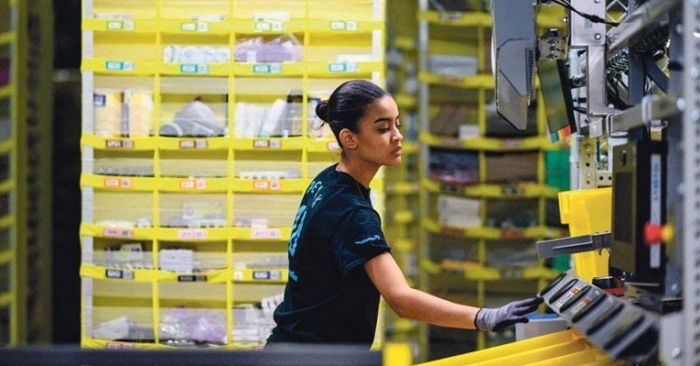How resiliency forms the strongest link in the digital supply chain
Recent times have brought the importance of supply chain resiliency into even sharper focus. Organizations that had already built resilience into both their technology networks and operational networks have managed to weathered the turbulent times throughout the COVID-19 pandemic better. For others, it has been a huge wakeup call

Recent times have brought the importance of supply chain resiliency into even sharper focus. Organizations that had already built resilience into both their technology networks and operational networks have managed to weathered the turbulent times throughout the COVID-19 pandemic better. For others, it has been a huge wakeup call.
Ranga Pothula of Infor and Heidi Benko of Infor Supply Chain Management write about how visibility, intelligence and a digitally connected ecosystem contribute to resilience in supply chain.
As we now stand back and attempt to regroup, rebuild and regenerate, every business has a chance to reflect and decide how to become better prepared.
This is the point at which organizations in every vertical market should realize that resiliency needs to be built-in at a granular executional level; it is a function that should apply to, and connect with, the architectural foundations of every process in the company. It is not some sort of dial or switch that you simply turn on or up at the start of a crisis, whether it be a global contagion or some other form of economic upheaval.
But before we consider the nature of resiliency, we need to decide what we really mean by "change" itself in order to understand the various forms in which it manifests itself.
At the force majeure level, there is sudden catastrophic change, the likes of which we witnessed in 2020. Outside of pandemics, we should also include other "black swan" events that disrupt supply chains, such as a sunken container ship, a hurricane, or perhaps a widespread contamination incident.
While these massively disruptive and dreadful events typically cause chaos, and even the loss of life, they are comparatively infrequent, and they don't threaten the long-term viability of a business with the same types of market forces and fluctuations that emanate from deeper-set market trends. There are more ground-level changes in demand patterns that nibble away at margins and service capabilities slowly. Less cataclysmic, these changes can ultimately have even more impact than a hurricane.
Even longer term, when securing essential strategic resources for the business itself is threatened, change happens in a form that can lead to business closure. Knowing how and why change itself occurs (and what shape it comes in) can help us to build a resilient supply chain capable of driving business operations today, with a constant eye on every variable factor that could impact business tomorrow.
Detecting events
A resilient supply chain is based on three core capabilities: visibility, intelligence and a digitally connected ecosystem. To restate these cornerstones in more depth, we are talking about:
• end-to-end real-time visibility;
• intelligence across root cause identification,
• exception detection and resolution management;
• and an exceptional ability to execute through a digitized ecosystem that provides a path to autonomous "sense and respond" activities.
Taking each of these elements in turn, let's look at visibility. In a traditional business model, an enterprise bases its visibility only on what its suppliers are telling it. You don't really know where your order is, or when it is going to arrive. However, cloud-based supply chain networks offer the opportunity for all parties to view and interact with one single view of an order in real-time. The net result is that the business, its suppliers and its carriers operate using a single instance and version of data - a single source of truth.
This singularity is important. It cuts out uncertainty, delays and eradicates separation so that there is little or no contingency factor in daily operations. But visibility needs to run end-to-end for true clarity. The business needs to know the impact of its actions upstream (on its suppliers) and as far as possible downstream (into its sales channel and customer base).
Additionally, end-to-end visibility needs to happen in real-time, i.e. all of the information relating to all supply chain transactions, movements, price fluctuations and so on, needs to be available all of the time, in real-time. Without real-time, super-high data quality, it is not possible to drive the supply chain by exception and take advantage of machine learning (ML) technologies.
As the resilient supply chain company moves forward, it has the advantage of software algorithms that can help to detect events that can cause disruptive issues. It's important to remember that there will always be an element of "operational noise" throughout both the physical and financial supply chain, so the organization will need to qualify just how much noise it can live with in the normal course of business.
At this point, we can then drill down into the root causes behind any single event. When there is a shortage of materials for a production plant, or perhaps a shortfall in the supply of finished materials for a retail store, we need to understand the why-factor behind these events. Knowing the difference between a shortage caused by a shift in market demands, and scarcity resulting from a container ship being stuck in a port, is fundamentally important.
The real intelligence comes from being able to group together different events happening in various locations around an organisation's total global supply chain. If the business can pinpoint the same root cause across multiple operational issues, then it can deliver resolution management more quickly.
Visibility at DB Schenker
An intelligent, resilient supply chain can process thousands of variables and data sources across a single cloud-based platform to help the business navigate forward. Working at speeds far in advance of any human capabilities, a digital supply chain ecosystem helps all parties connect and collaborate over dates, times, shipping orders, financing and so on. When all partners open up the external-facing portions of their own systems accordingly, business decisions happen faster, with improved accuracy and less uncertainty. More problematic is the fact that it is an uncertainty that breeds contingency and cost.
DB Schenker was in the midst of a supply chain transformation when the pandemic hit. So did the visibility they achieved make a difference? As DB Schenker's Joachim Schaut, VP Intercontinental Supply Chain Solutions, told diginomica, without their supply chain transformation efforts, they would not have been able to come to the aid of their customers in the same way:
"Our customers saved a lot of money with solutions, and keeping it at origin, or delaying it in transit and so on, because we had the visibility on the item level. Without us, those companies would not have this in-depth visibility - and not all on one platform. They would have needed ten days, maybe two weeks, to get all the information. Then you still have two weeks of arriving containers and your shops are full, which leads to warehousing solutions at destination - the most expensive thing you can do."
In the immediate future, more and more of the actions we take inside our most resilient digital supply chains will be carried out autonomously by intelligent agents and smart algorithms. Our physical and our accompanying financial supply chain networks will reflect the automation intelligence already being applied to manufacturing via Industry 4.0 practices.
If today we stand at automation stage 1.0, then business is set to apply more algorithmic intelligence in the future. A business that knows when and where this intelligence resides is not just smart, it is also resilient. It starts to make decisions based not just on short-term prices, supply availability and market demand, but also on perceived business longevity. The core truth is, building supply chains capable of resiliency to "normal" change will enable businesses to adapt to massive upheavals, if and when we have to adjust to some wildly different "new normal."
 | Ranga Pothula is the MD India sub-continent & SVP global delivery services of the New York-headquartered multi-national software company Infor |
 | Heidi Benko is the VP solutions strategy & marketing at Infor Supply Chain Management. |
The views and opinions expressed in this article are those of the author and do not necessarily reflect the views of Indian Transport & Logistics News.



